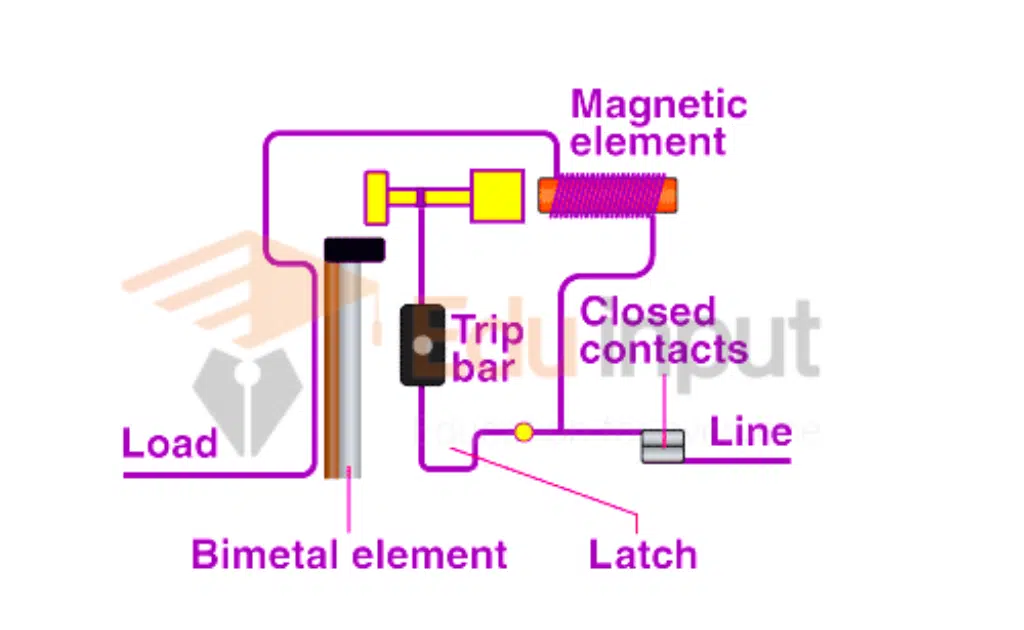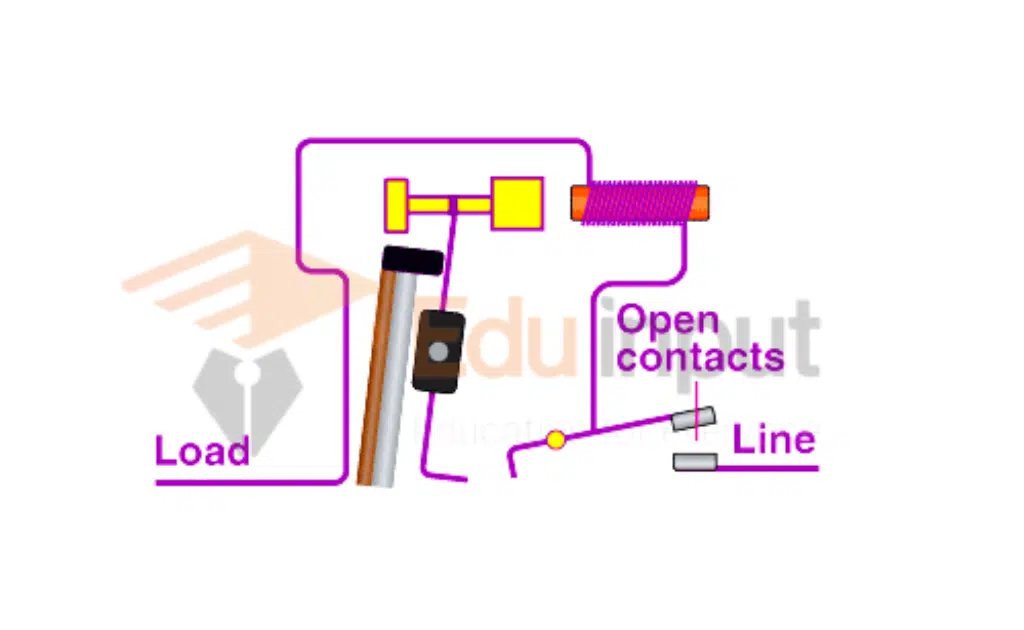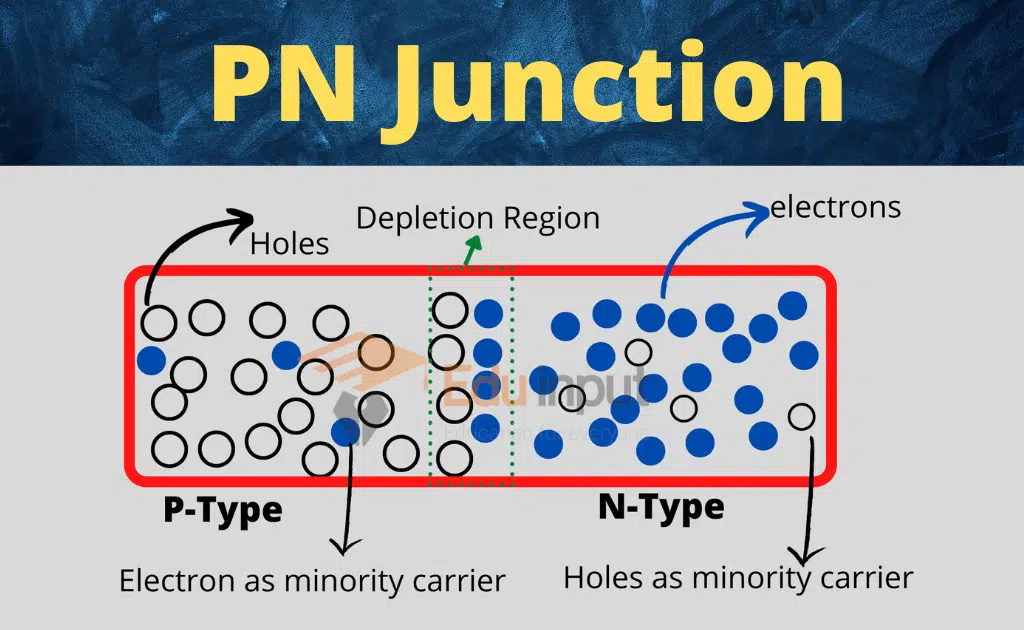Miniature Circuit Breaker-Definition, Types, Working, And Advantages
Miniature Circuit Breakers (MCBs) are electrical safety devices used to protect electric circuits from damage caused by excessive electric current. They serve as an alternative to fuses and work by automatically interrupting the flow of electricity when the current exceeds a set limit.
Miniature Circuit Breaker
Miniature Circuit Breakers (MCBs) are electrical protection devices that are used to protect electrical circuits and equipment from damage due to overloading or short circuits. They are designed to automatically disconnect the electrical circuit when a circuit breaks or overflows.
MCBs are a type of circuit breaker that is smaller in size compared to traditional circuit breakers. It makes them more compact and easier to install in electrical panels. They come in different rated current levels. They are selected on the base of the current requirements of the electrical circuit they are protecting.
According to some researchers, smart miniature circuit breakers are a new invention that is growing quickly[1]. However, it still has a high rate of failure. The main reason for this is because it gets too hot and burns out when too much electricity goes through it. The main reasons are
- The wires are not connected tightly enough.
- The quality of the wire is not good.
- The wire terminal on the breaker is not thick enough.
Types of Miniature Circuit Breakers
There are several types of Miniature Circuit Breakers (MCBs) used in electrical systems for specific applications. It provides different levels of protection. Some common types of MCBs include:
Thermal-magnetic MCBs:
These are the most commonly used type of MCBs. They have a thermal trip mechanism that responds to overloading conditions and a magnetic trip mechanism that responds to short circuits.
Electronic MCBs:
These MCBs use electronic components instead of mechanical components to detect overloading and short-circuit conditions. They are more sensitive and faster-acting than thermal-magnetic MCBs.
Adjustable MCBs:
These MCBs have a trip setting that can be adjusted to meet the specific needs of the electrical circuit they are protecting. They are used in applications where the current level may vary, such as in motor control circuits.
Earth Leakage Circuit Breakers (ELCBs):
These MCBs are designed to protect against earth leakage, which occurs when electrical current flows through the earth instead of returning to the source. ELCBs are commonly used in residential and commercial electrical systems.
Residual Current Circuit Breakers (RCCBs):
These MCBs are designed to detect and interrupt any residual current that flows in a circuit. They are used to protect against electrical shock, fire, and other hazards caused by residual currents.
Air Circuit Breakers (ACBs):
These are high-capacity MCBs used in large industrial and commercial electrical systems to protect against overloading and short circuits. They are often used as the main circuit breaker in electrical panels.
The type of MCB used in a particular application depends on the specific requirements of the electrical circuit, the level of protection required, and local electrical codes and regulations.
Working Principle of Miniature Circuit Breaker
A Miniature Circuit Breaker (MCB) is like a safety guard for your electrical circuit. It helps protect your circuit from problems like too much electricity flowing, which can cause damage or even a fire.
Think of an MCB as a switch that can be opened or closed to control the flow of electricity. When there’s a problem with too much electricity flowing, the MCB will automatically open the switch and stop the flow of electricity. This will prevent the problem from getting worse.

There are two parts of an MCB that work together to protect your electrical circuit. The first part is a bimetallic strip. This part senses when there’s too much electricity flowing and gets hot. When it gets hot, it bends and releases a latch that opens the switch and stops the flow of electricity.

The second part is a plunger. This part senses when there’s a sudden increase in electricity flow, like during a short circuit. When this happens, the plunger moves quickly and opens the switch to stop the flow of electricity.
So, in short, an MCB is like a safety guard for your electrical circuit that helps protect it from problems by automatically stopping the flow of electricity. If the MCB trips, you just need to turn it back on to restore the flow of electricity.
Advantages of Miniature Circuit Breaker
The advantages of MCBs include their compact size, ease of installation, and the ability to provide reliable protection for electrical circuits. They are widely used in residential, commercial, and industrial electrical systems, and are an essential component in ensuring electrical safety and reliability.
Related FAQs
What is a miniature circuit breakers?
A miniature circuit breaker (MCB) is a type of electrical protection device. It is used in low voltage electrical systems to protect against overcurrents, short circuits and other electrical faults.
What is the main features of MCB?
The main features of MCB are listed below.
1.Acts faster than fuses during short circuits.
2.Offers better overload protection than fuses.
3.Reusable even after interruption of the circuit.
4.Resets automatically after clearance of fault.
5.Does not require rewiring or replacement like fuses.
What is the range of MCB?
An MCB has a current carrying capacity of up to 100 amperes, with an operating current range of 0.5 to 63 amperes. On the other hand, an MCCB can carry a higher rate of current, up to 2500 amperes, with an operating current range of 25 to 630 amperes.
Does MCB trip on shock?
No, a miniature circuit breaker (MCB) does not trip due to physical shocks or impacts. MCBs are designed to detect and trip in response to overcurrents, short circuits, and other electrical faults in the system. They do not respond to physical shocks or vibrations.






Leave a Reply